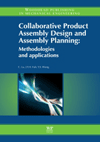X-Y-Z: Controlling Cylinders
Stroke speed is regulated with a flow control valve. Installed in the air line between the directional control valve and the cylinder, the flow control valve governs speed by controlling the flow of exhaust air from the cylinder. For double-acting cylinders, two flow control valves are required. A muffler or sandwich can also be applied to the exhaust air to control speed.
Either way, the key is regulating the exhaust air, says Richard Porqueddu, product management for handling systems at Festo Corp. (Hauppauge, NY). This arrangement maximizes control over the cylinder, because the full line pressure is used for actuation. The upstream volume of the retracted cylinder is small and reacts instantly to full pressure. The larger, downstream volume bleeds off relatively slowly, allowing the cylinder to advance on a cushion of air.
If the flow control valve restricted the incoming pressure, the story would be different. "Engineers who are new to pneumatics logically assume that restricting incoming pressure is best," Porqueddu says. "However, in that arrangement, the downstream side of the cylinderthe side with the most volumeis vented, and pressure builds up slowly in the smaller volume on the retracted side. This volume fills very quickly, and the cylinder lurches forward. When the volume increases faster than the supply valve can keep up with, a ‘stick-slip’ motion results."
Clayton W. Fryer, product sales champion at IMI Norgren Inc. (Littleton, CO), sums it up this way: "When in doubt, meter out. It’s a sin to meter in."
Some suppliers offer cylinders with built-in, servo-actuated valves and position feedback controls. These "smart" cylinders can do more than just advance and retract. For example, to optimize cycle time, the cylinder can be programmed to travel at maximum velocity during the initial part of the stroke, but slow down for critical positioning at the end of the stroke. The cylinder can also be programmed to stop at any point in its stroke.
Without servo control, stopping a cylinder in midstroke is a trickier proposition. Hard stops, additional valves and logic control can do the job. Hall-effect sensors or reed switches can be used to signal when the piston has reached a particular point in the stroke. However, the positional accuracy of such cylinders is not good, and they should be carefully considered for potential safety concerns.
A variety of optional equipment is available to improve cylinder performance, says Ruben Hernandez, technical support engineer with Bimba Manufacturing Co. (Monee, IL). An air regulator set ahead of the directional control valve ensures that a constant pressure powers the cylinder. Bumpers provide minor shock control at the end of the stroke and dampen the noise produced by the piston hitting the end-cap. A similar solution is an adjustable air cushion. This device traps a small amount of exhaust air at the end of the stroke, creating an air pocket that decelerates the load. The cushion’s performance is adjusted with a needle valve. Rod scrapers, bellows and heat shields are among several options that protect cylinders from harmful environmental conditions.
An often overlooked aspect of cylinder control is the compressed air. "Providing cylinders with clean, dry, lubricated air is easy to accomplish, but rarely done correctly," Fryer says.
For example, synthetic oil from the compressor can attack the nitrile rubber seals inside cylinders, causing leaks around the piston and the rod. This can be prevented by installing a filter at the point of use. "Most pneumatic systems are lucky to see a 40-micron filter!" says Fryer.
Looking for a reprint of this article?
From high-res PDFs to custom plaques, order your copy today!






